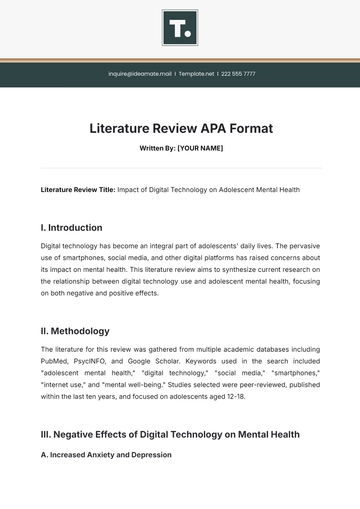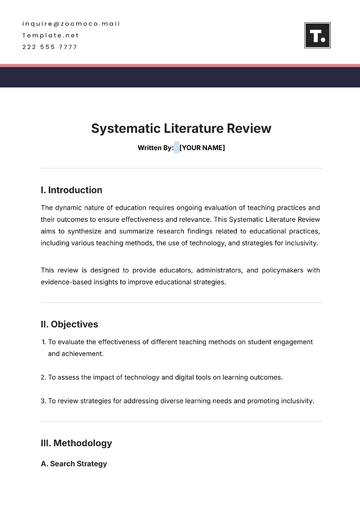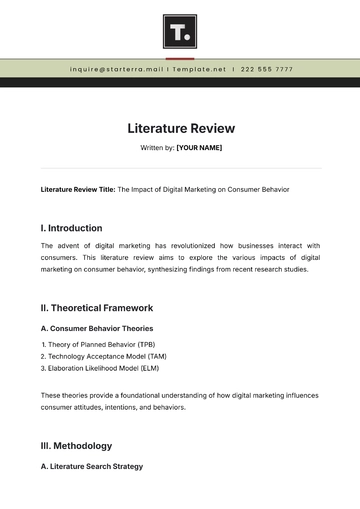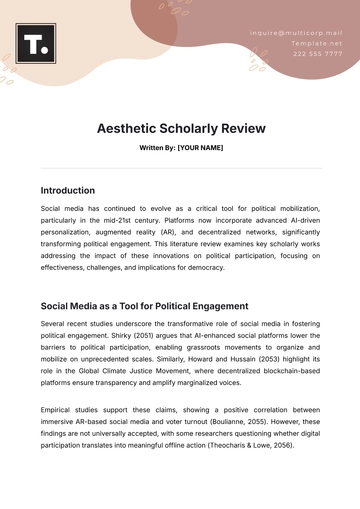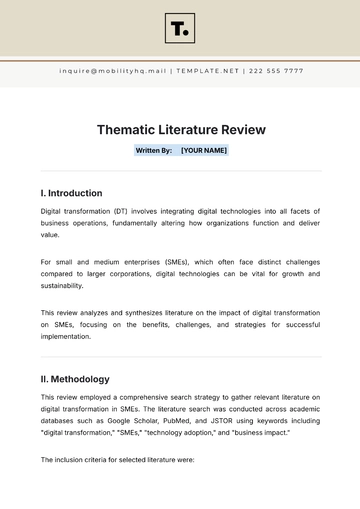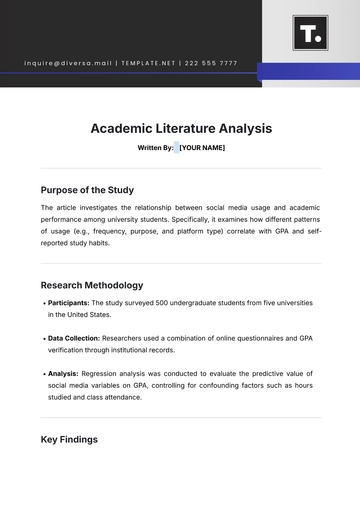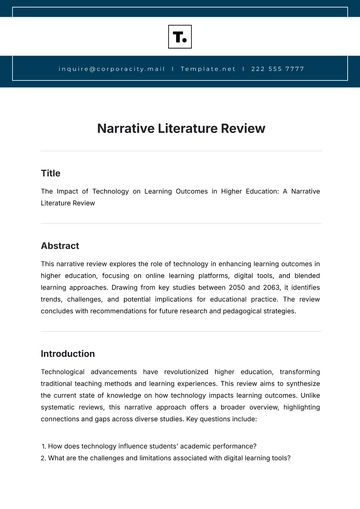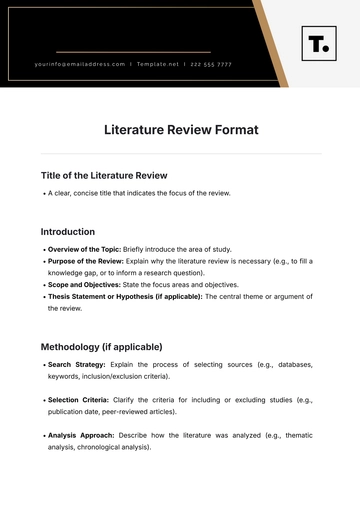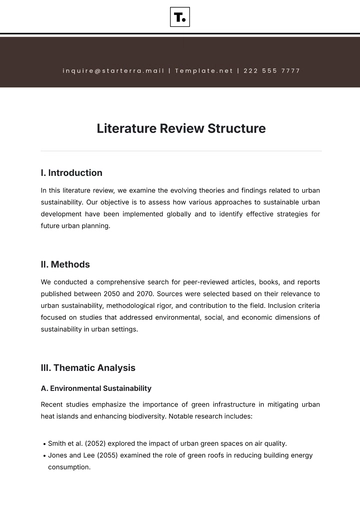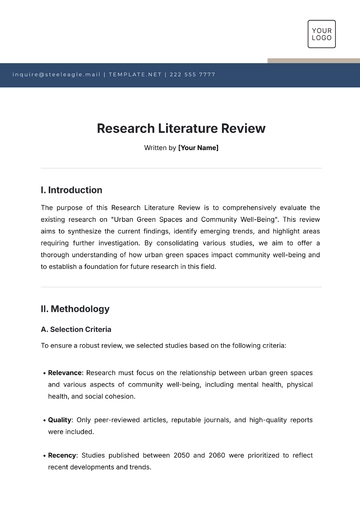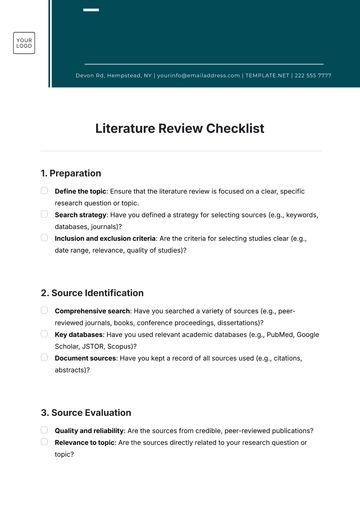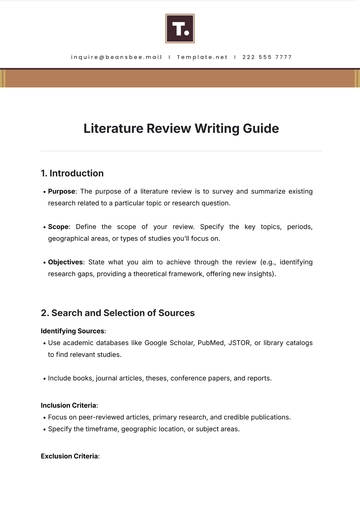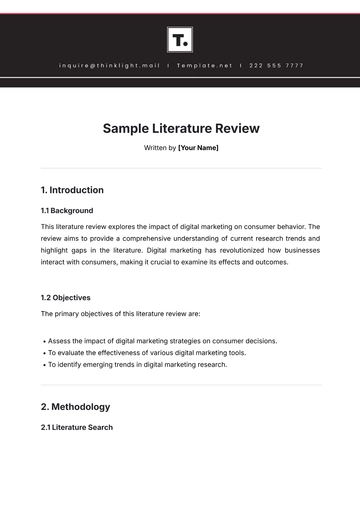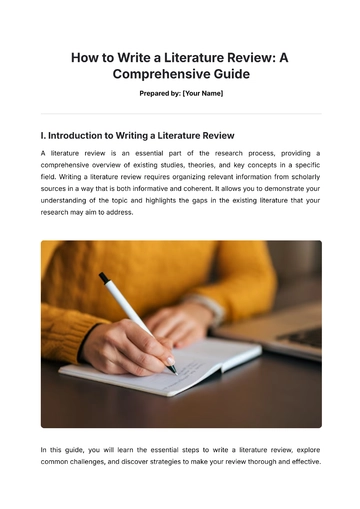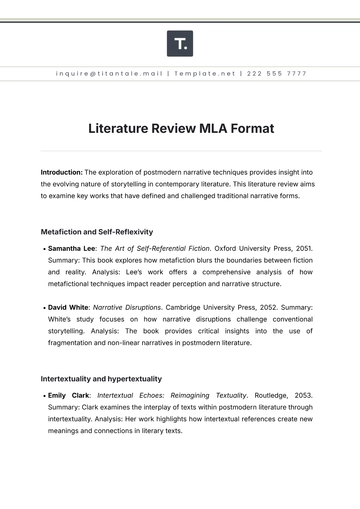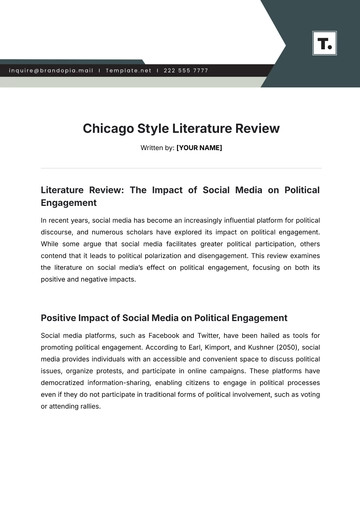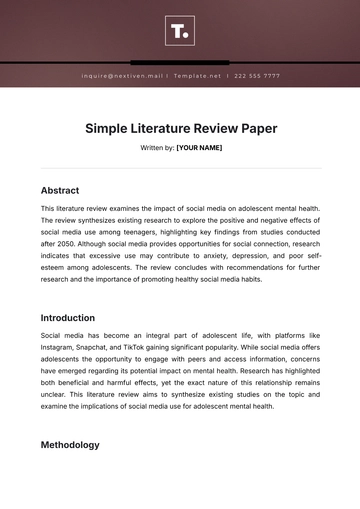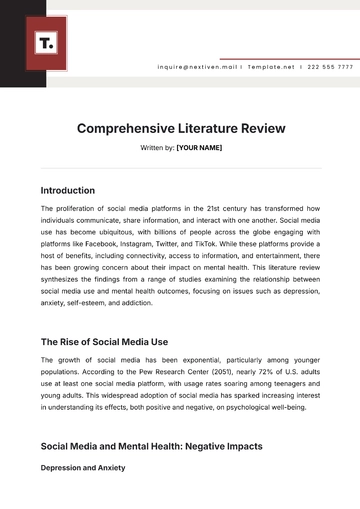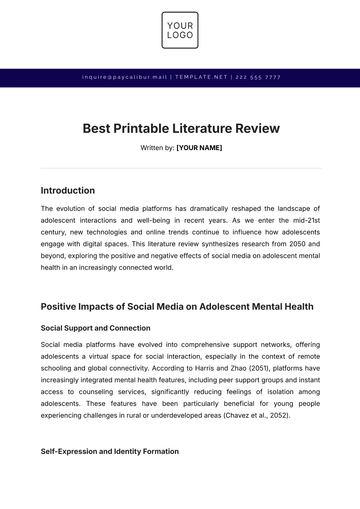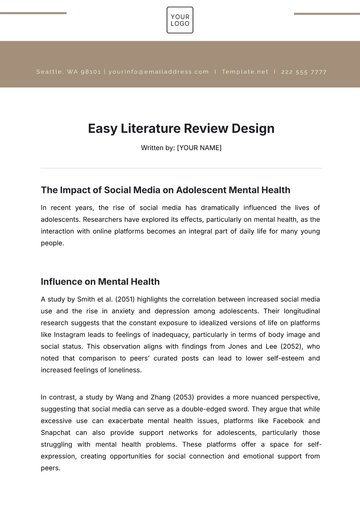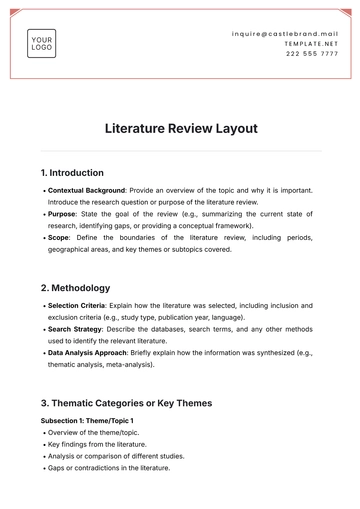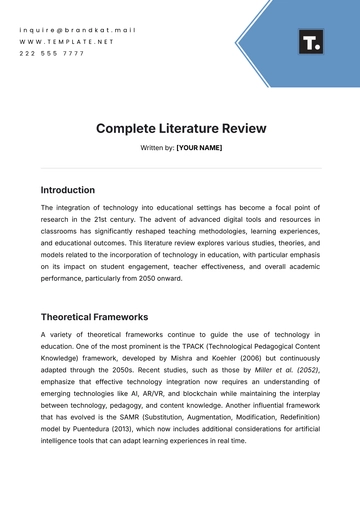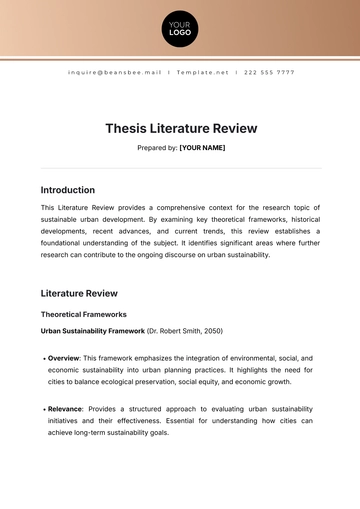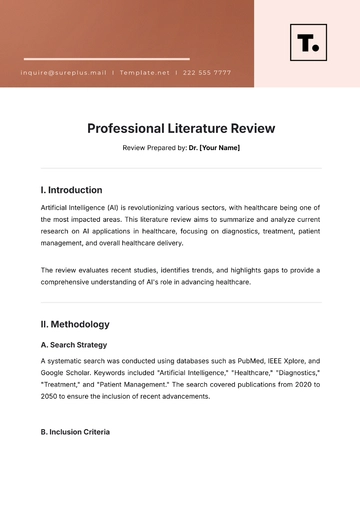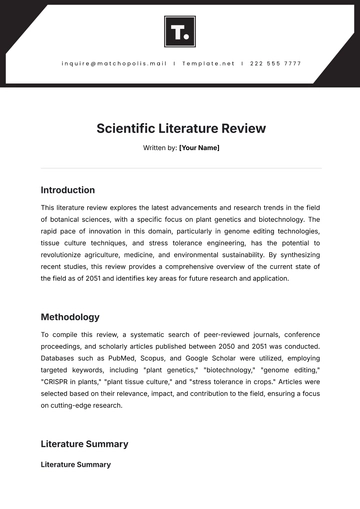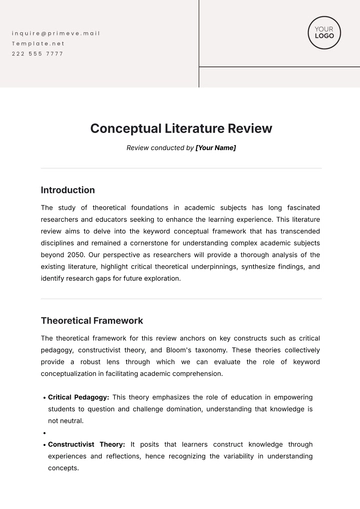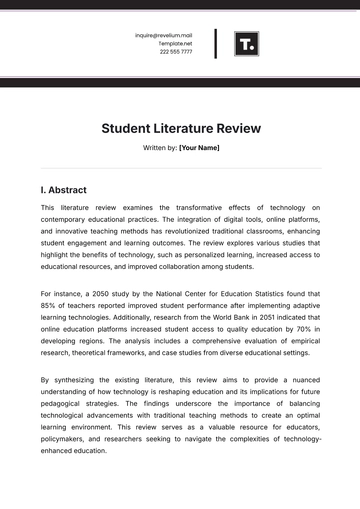Free Blank Literature Review
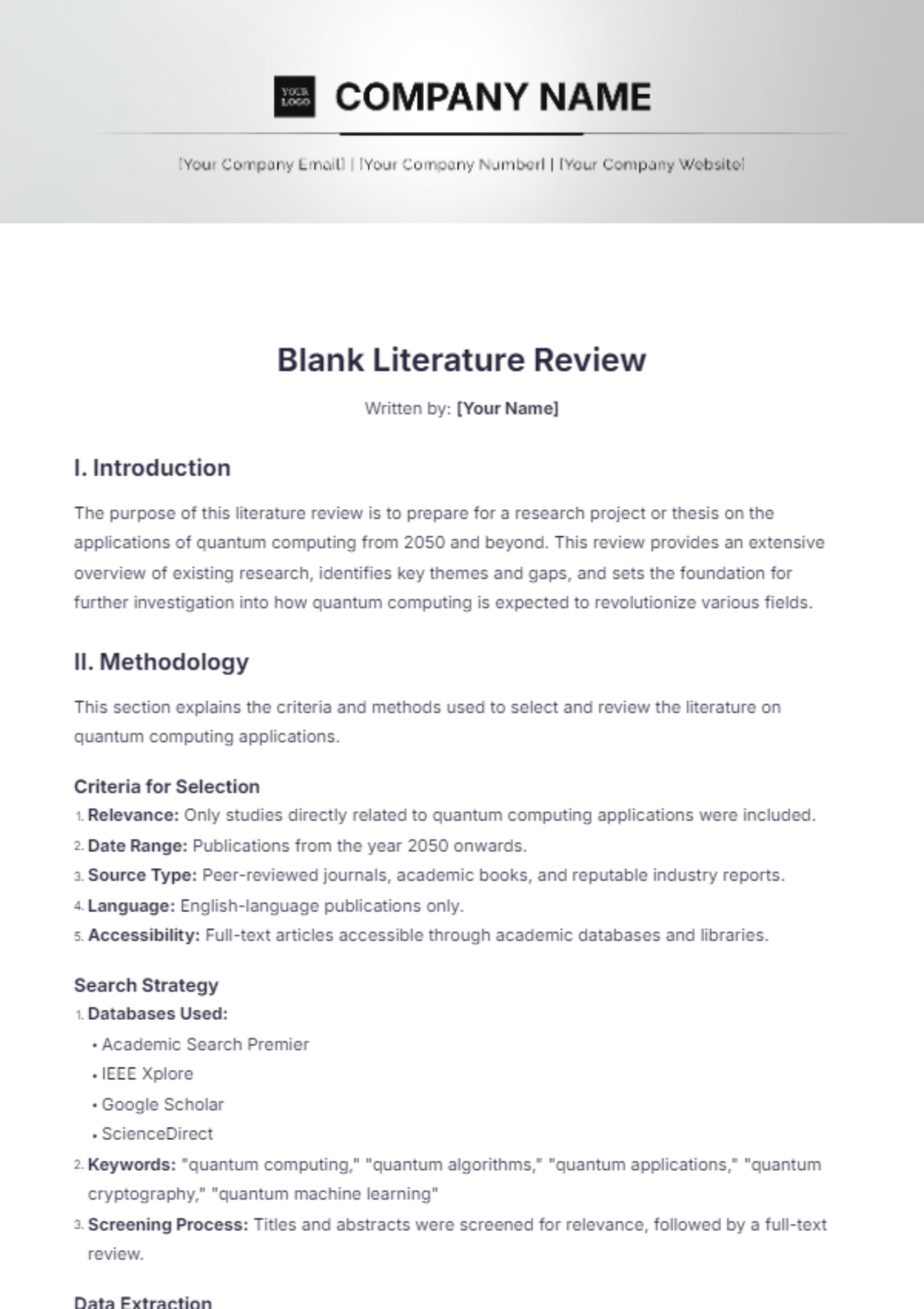
Written by: [Your Name]
Title of Literature Review
(This should be descriptive of the topic or research question.)
Introduction
Purpose of the Literature Review:
Provide a brief overview of the purpose of your review. Explain why this topic is important and what the review aims to accomplish (e.g., summarizing research, identifying gaps, etc.).Research Question or Problem:
State the research question(s) or problem that the literature review will address.Scope and Focus:
Discuss the scope of the review (e.g., time frame of studies reviewed, geographical focus, key themes, etc.).
Methodology
Search Strategy:
Describe the criteria for selecting sources, including databases, keywords, and time periods of publication. Briefly explain the inclusion/exclusion criteria.Overview of Sources:
Provide a brief explanation of the types of sources included (e.g., peer-reviewed journals, books, conference proceedings, etc.).
Thematic Categories / Main Themes
This section organizes the review into thematic categories or key topics. Divide the literature into logical sections based on themes, research questions, or methodologies. You can use subheadings for each theme.
Theme 1: [Insert Theme]
Key Findings:
Summarize the most important findings related to this theme from the literature.Strengths and Limitations:
Discuss the strengths and weaknesses of the studies within this theme.
Theme 2: [Insert Theme]
Key Findings:
Summarize the findings related to this second theme.Strengths and Limitations:
Discuss the strengths and weaknesses of the studies within this theme.
Theme 3: [Insert Theme]
Key Findings:
Summarize the findings related to this third theme.Strengths and Limitations:
Discuss the strengths and weaknesses of the studies within this theme.
(Add more themes as needed)
Synthesis and Discussion
Emerging Trends:
Identify and discuss any emerging trends, patterns, or connections between the studies reviewed.Gaps in the Literature:
Highlight any areas where the literature is lacking or where further research is needed.Implications:
Discuss the implications of the findings for theory, practice, policy, or future research.
Conclusion
Summary of Key Findings:
Summarize the most important points that emerged from the literature review.Recommendations for Future Research:
Provide recommendations based on the gaps identified in the literature.Final Thoughts:
Conclude with final reflections on the state of the literature and its contribution to the field.
References
List all references cited in your literature review in the appropriate citation style (APA, MLA, Chicago, etc.).
- 100% Customizable, free editor
- Access 1 Million+ Templates, photo’s & graphics
- Download or share as a template
- Click and replace photos, graphics, text, backgrounds
- Resize, crop, AI write & more
- Access advanced editor
Elevate your research with Template.net's Blank Literature Review Template. This fully customizable and editable template simplifies the writing process, ensuring precision and professionalism. Seamlessly integrate the AI Editable Tool to tailor content to your needs, saving time and enhancing accuracy. Ideal for academics and researchers, this template is your go-to resource for efficient literature review creation.

